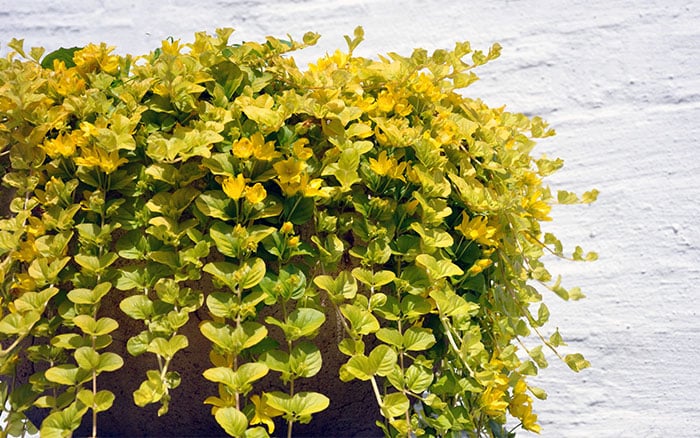Ponds are wonderful things to have in gardens, for humans and wildlife alike. They can be restful or exhilarating, especially if combined with a water pump. They are ideal places of refuge for newts, frogs, and other amphibians, as well as attracting insects such as dragonflies and water boatmen.
If the pond has been created using pond liners then it’s essential to hide the edges of the liners to create the perfect, natural looking water feature. It also provides hiding places for wildlife to shelter from the elements and predators.
Pebbles, flagstones, and boulders of varying sizes and shapes can help form the framework to partially disguise the edges.
Adding plants should be the finishing touch as they can completely hide pond liners as they grow down to the water’s edge. As well as offering extra visual attractions by softening and expanding the pond’s shape naturally.
Including a mix of different shape and size plants all helps to create a more natural and visually exciting pond area.
Plants for low-ground pond cover
Start with a selection of low growing ground cover plants with a creeping habit. Choose evergreen where possible for year round cover.
Evergreen plants don’t lose all their leaves in one go, so they’re less likely to create a layer of green algae on top of the water. This is usually caused by the water having too many nutrients in it, of which falling leaves are one cause.
Plants such as Creeping Jenny, Bugle and Thyme give year round interest and colour.
Lysimachia nummularia aurea (Golden creeping jenny)
This is an ideal low-growing, evergreen plant for covering the edge of ponds. Its golden leaves and bright yellow flowers add a cheerful feel to the area. It can also be grown as a submerged pond plant being placed to a depth of up to 45cm in the water.

- Flowers June to August
- Hardy
- Grows to 50cm tall and 45cm wide
- Moist soil
- Full sun to dappled shade
- Exposed
Ajuga reptans ‘Black Scallop’ (Bugle)
The large, deep purple, scallop shape leaves of this easy to grow cultivar, combined with its blue flowers, make it an excellent choice for shadier areas. And it’s a wonderful colour contrast to golden creeping jenny. It rapidly spreads by way of runners and lodges quite happily in-between rocks and stones along the pond’s edge.

- Flowers April to June
- Hardy
- Grows to 25cm tall and 90cm wide
- Moisture retentive soil
- Part shade
- Exposed
Thymus citriodorus ‘Golden Queen’ (Thyme)
There are lots of different cultivars of thyme to choose from, but this one, with its green and gold variegated leaves and pink flowers, would work with the creeping jenny and bugle. Particularly as it will grow in sun or part shade. Additionally, its leaves have a delightful lemon scent when crushed.

- Flowers June to August
- Hardy
- Grows to 150cm tall and 20cm wide
- Well-drained, moisture retentive, fertile soil
- Full sun to dappled shade
- Sheltered
Vertical plants to add interest
Although creeping ground cover plants are undoubtedly the best way to hide a pond liner, including plants with upright stems adds another layer of interest to your pond area. As well as attracting wildlife, such as dragonflies. They can often be seen emerging from vertical stems in or near water.
Iris (Louisiana hybrid) ‘Black Gamecock’ (flag iris)
A pretty iris with striking dark black flowers with yellow signals that attract butterflies, hoverflies, and bees. Divide every three years to keep it looking good and reliably repeat flowering.
Iris look wonderful when in flower. Our native yellow flag iris is very easy to grow but is vigorous and so only suitable for larger ponds but there are several other less vigorous choices that will grow with their roots covered by water in the pond.

- Flowers July
- Hardy
- Grows to 50cm tall and 15cm wide
- Needs to be planted in shallow water or in permanently wet soil
- Full sun
- Exposed
Sarracenia flava (Pitcher Plant)
These other worldly looking plants are certain to attract attention from old and young alike as they are carnivorous plants! As a result, they are excellent at catching flies and other insects.
For an exotic look, a selection of hardy sarracenias will really get your friends talking!

- Flowers April to May
- Hardy
- Grows to 100cm tall and 10cm wide
- Moist, boggy, nutrient-poor soil
- Full sun
- Exposed
Plants for underwater cover
Lastly, if the bottom of pond liners are visible, you can solve this by adding plants that will happily live permanently underwater such as hornwort and willow moss.
The good news is that they’re easy to plant. Just throw them in the water! Tie to a stone to ensure they sink to the bottom.
They also have the extra advantage of oxygenating the water and feed on algae. This often turn a pond’s surface green.


Ponds are a great addition to any garden. With these plants, seamlessly incorporate a natural water feature that will leave you feeling peaceful and in harmony with nature.

Leave A Comment